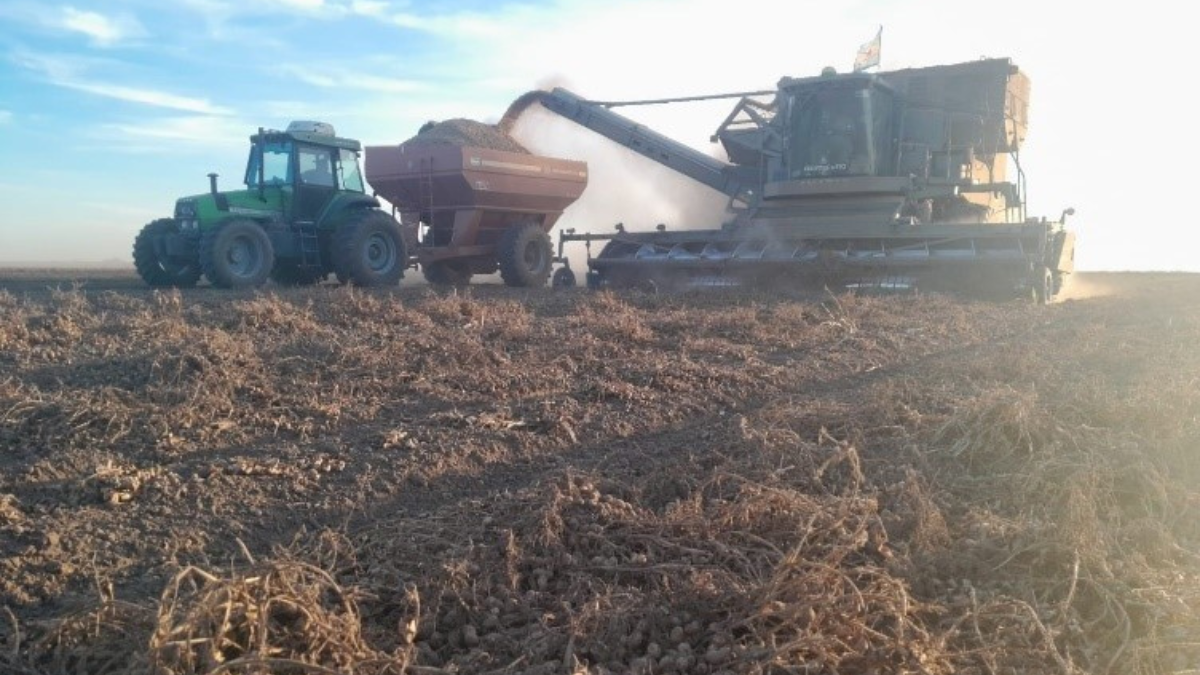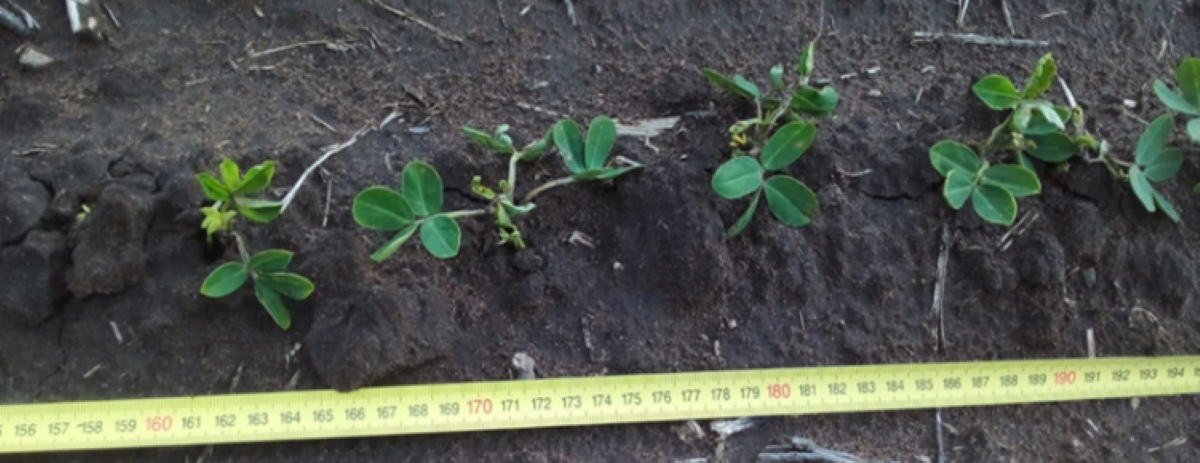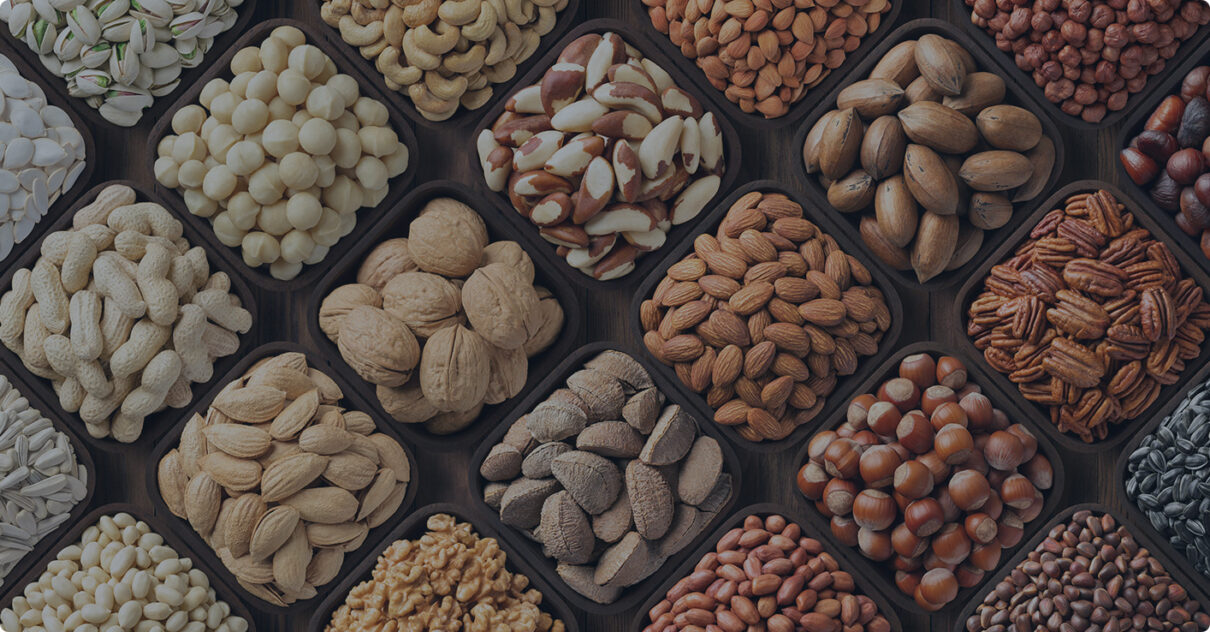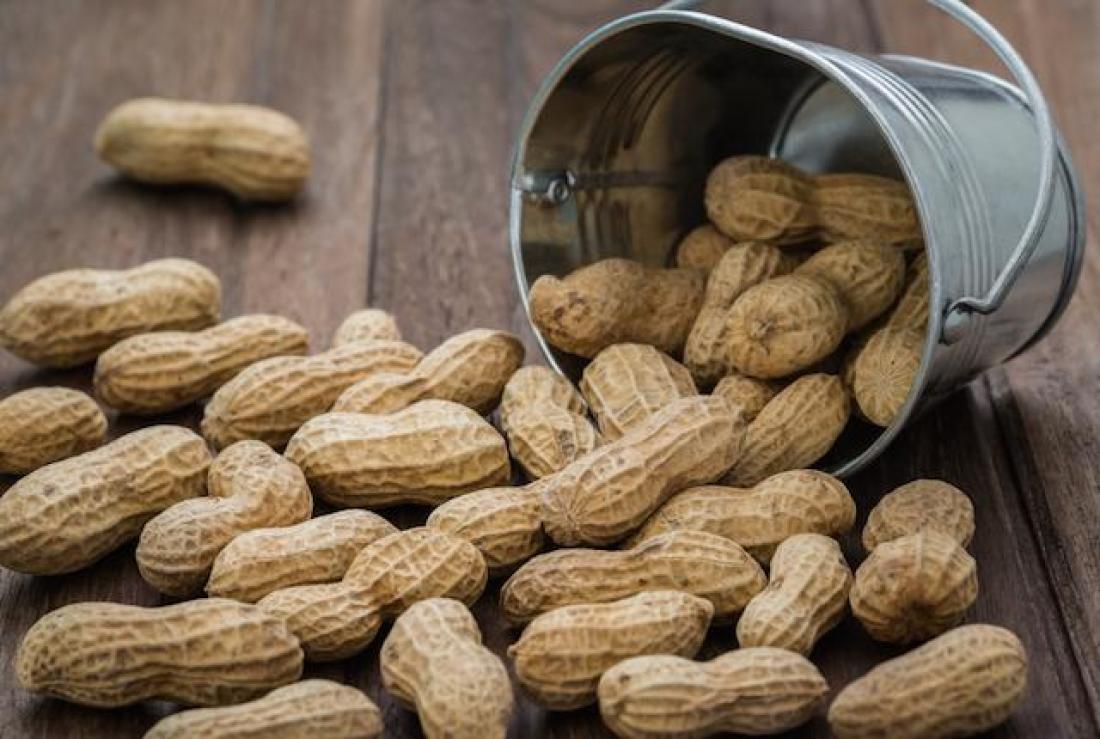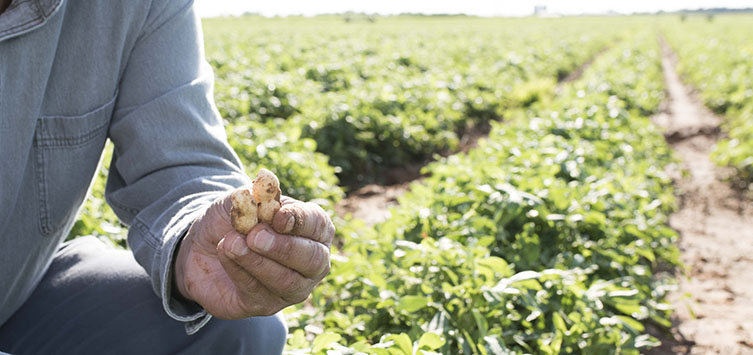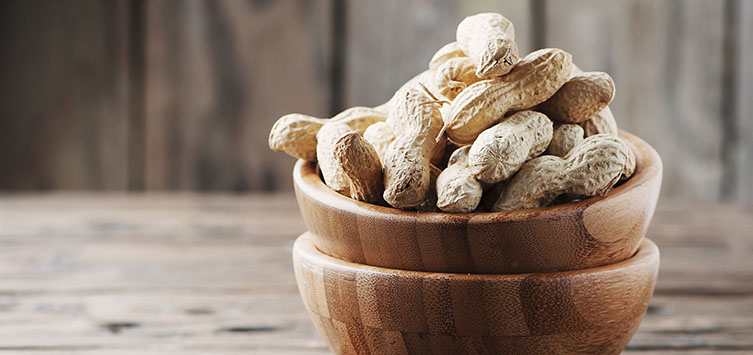
4th Peanut Crop Report as per February 5th 2023
General perspective
4th Peanut Crop Report
The climate has been presenting very accelerated and extreme changes;
The rainfall was far below the historical averages however during January 2023 this changed and the rainfalls exceeded the expectations, compared to the same month the year before.
According to different climatic models consulted, everything would indicate that from February the rains will be more homogeneous throughout the peanut area.
As a result of this, the peanut crop is starting to overcome the hydric stress conditions reported previously. The higher humidity in the environment is mitigating the effects of the drought but it does not solve the current problems since the crops were subjected to a high level of hydric stress dur to the lack of rain in addition of the high temperatures for a long time.
All the areas detailed in our reference map are in acceptable conditions, although the East, South and Center-South show a better state in relation to the North, Center and West, which have received less rainfall in recent months and show water demands slightly higher.
In recent weeks, the peanut crop has notably increased the crop growth rate (TCC), showing the development of pegs and pods. In addition, those lots that were planted early (late October 2022) already have fully expanded shells, close to developing future yields.

Our rating of the general condition of the crop, in this 4th Peanut Crop Report, after our last tour of the fields:

In a few days, the period of greater water demand will begin.
In general, the evolution is in the R3 phenological stage (shell formation stage and complete shell development), so normal temperatures and significant rainfall – to overcome the water deficit – will be crucial to achieve good results.
The drought experienced from November 2022 to date, added to the high extreme temperatures, favoured the appearance of pests such as spider mites, in a large part of the area planted with peanuts, controlled with chemical applications to prevent their expansion.
Our reference map of peanut production areas
The main peanut areas in Argentina include the provinces of Córdoba, La Pampa, San Luis and Buenos Aires.

Analysis of rainfall and temperatures
As mentioned in our previous report, December 2022 ended with a marked water deficit in most of the peanut area. During January, rainfall of variable intensity was recorded in different peanut areas. There were rains between 11th and 12th of January and then again, new storms on the 17th and 23rd. Finally, on January 27th , a new important storm, with intense rainfall. The southern and eastern zones were the most benefited, achieving, in some cases, records greater than 65 mm, although the average was 40 mm for the entire peanut area.
All these rains helped to significantly improve soil moisture levels, the effect of which is important, because the period of greatest demand for water is yet to come.

Finally, there was a new storm at the time of writing this report:

The recorded minimum and maximum temperatures during the first half of January can be described as extreme.
The minimum temperatures were around 19/20° C, while the maximum temperatures were between 32/36° C. (Source SMN). So far, February shows similar thermal records. Below are maps of the monthly temperatures.

As shown on the below figure, the average values of useful water in the soil profile (good intermediate condition), improved from East to Northeast of Cordoba, up to 60% to 70% during January.
The graphic shows the current values are good but still not ideal for the crops because at this stage the water demand intensified.
We can notice the great difference in useful water in the soils in December 2022 and January 2023. Source: FAUBA.

Soil profiles in dry conditions, little water extraction from plants. As mentioned before, crops only subsist on the rainfall they receive.
Extended forecast trends
The following image shows the ENSO simulation model, showing the probability of precipitation and temperatures. In the month of January (2023), the chances of rain continue to be low, followed by the months of February and March, which show a more stable rainfall trend according to the model. The appearance of the La Niña phenomenon is nil, but there are no doubts about its neutrality from February 2023, with a marked incidence of the El Niño phenomenon over that of the La Niña. Therefore, it would indicate that, if this model is met, we would have a climatically accurate end of the season in terms of rainfall and temperatures. (see fig 1.).

Projected field tasks
The first application of fungicides for the prevention of leaf spot has already been carried out in a generalized way and treatments for the control of spider mites are beginning to be repeated, since new infestations are taking place.
Although high temperature and humidity conditions are adequate for peanut growth, they also predispose the development of leaf spot and other soil diseases such as sclerotinia sp. The latter has a characteristic development by generating a white mold on the neck of the plant. This disease cannot be chemically controlled and can cause plant death.


Final Appreciations
Although there was very little rain in the months of November, December and part of January in Argentina, the last 20 days there were rains that were distributed evenly throughout a large part of the peanut-growing area, which made it possible to reverse the water deficit initially reported. Consequently today, in the publication of the 4th peanut crop report, we have a more optimistic view of the final result of the harvest.
During February is when the yield potential of the harvest begins to take shape, so it will be essential that the extended forecast of a change from a La Niña situation to Neutral be fulfilled and that would imply that the rainfall accompany during the next 45-60 days, to get good returns, from what today is just a good project.
We believe that, as of the date of preparation of this report, the peanut crop shows good general conditions, having improved in recent weeks thanks to recent rainfall.
Compared to the previous report, although expectations have improved, it is still too early to draw absolute conclusions because there is still a long way to go.
Currently, peanuts, in general, are in the initial reproductive stages (R3), but since they were planted on different dates, they present unequal phenological states: 19.5% R2 (nailed), 52.5% R3 (pod formation) and 28 % (full pod). It is observed that the earlier planted peanuts already have an interesting formation of shells, while, in those lots of peanuts planted later, the formation of shells is expected to begin next week.

As happens every year at this time, producers and agronomists are dedicated to monitoring crops to act quickly in case of deviations, trying to obtain the best peanuts for export, although we depend on Mother Nature to help us with favourable weather conditions.
Images of the crop in the different productive zones;










